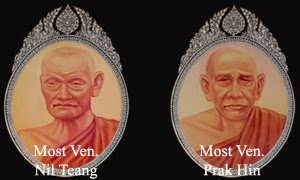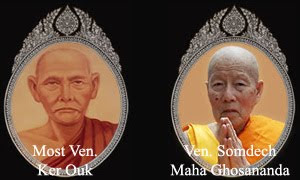All of the many teachings of the Buddha center on the Four Noble Truths just as the rim and spokes of a wheel center on the hub. They are called ‘Four’ because there are four of them. They are called ‘Noble’ because they ennoble one who understands them and they are called ‘Truths’ because, corresponding with reality, they are true. They are as follows:
1. Dukkha: suffering. All beings, human and otherwise, are afflicted with all sorts of disappointments, sadness, discomfort, anxiety etc. In short they are subject to suffering.
2. Samudaya: the cause of suffering. The cause of this suffering is craving, born of the illusion of a ‘soul’.
3. Nirodha: cessation of suffering. Suffering has a final end in the experience of Enlightenment (Nibbana), which is the complete destruction of delusion and the consequent ending of craving and ill-will.
4. Magga: the path leading to the cessation of suffering. This peaceful and blissful Enlightenment is achieved through a gradual training, a path called the Middle Way, or the Eightfold Path.
How to Solve Our Human Problems: The Four Noble Truths
The Four Noble Truths are natural truths. They always exist by themselves in nature whether the Buddha was born or had discovered them or not. So we can understand nature if we understand the Four Noble Truths. If understand, we will live in the world happily without too much suffering. And we can apply the principle of the Four Noble Truths any problems in our daily life which consists of the following steps:
First step: Dukkha, suffering on the basic level deals with the problem of daily life such mental and physical suffering. When the problem happens, we have to notice that what is that problem? And what is its state?
Second step: Samudaya, in this truth, we have to know that how the problem arises, every kind of problem has its origins.
For example, Mr. A wants to get a car. He works hard and saves his money to buy a car. Then he wants a boat, a house and more cars. He must work long hours sometimes 15 or 16 hours each day. He has no time to rest and enjoy his life. He becomes weak and ill. He is suffering.
This illustration shows that excessive wants and desires are the cause of problems.
Third step: Nirogha, in this step we have to end the problem, the origin of suffering. To end the problems, we have to set the method, the way and the step in order to attain the goal which we planed correctly.
Fourth Step: Magga, In this truth we have to practice the methods which we have planed. This truth defines the Buddhist way of life. It contains all the ethical teachings and practices of Buddhism. It provides the way and means to realize the goal set forth in the third truth. This way is called the Noble Eightfold Path since it consists of eight factors. It is also known as the Middle Way.
1. Dukkha: suffering. All beings, human and otherwise, are afflicted with all sorts of disappointments, sadness, discomfort, anxiety etc. In short they are subject to suffering.
2. Samudaya: the cause of suffering. The cause of this suffering is craving, born of the illusion of a ‘soul’.
3. Nirodha: cessation of suffering. Suffering has a final end in the experience of Enlightenment (Nibbana), which is the complete destruction of delusion and the consequent ending of craving and ill-will.
4. Magga: the path leading to the cessation of suffering. This peaceful and blissful Enlightenment is achieved through a gradual training, a path called the Middle Way, or the Eightfold Path.
How to Solve Our Human Problems: The Four Noble Truths
The Four Noble Truths are natural truths. They always exist by themselves in nature whether the Buddha was born or had discovered them or not. So we can understand nature if we understand the Four Noble Truths. If understand, we will live in the world happily without too much suffering. And we can apply the principle of the Four Noble Truths any problems in our daily life which consists of the following steps:
First step: Dukkha, suffering on the basic level deals with the problem of daily life such mental and physical suffering. When the problem happens, we have to notice that what is that problem? And what is its state?
Second step: Samudaya, in this truth, we have to know that how the problem arises, every kind of problem has its origins.
For example, Mr. A wants to get a car. He works hard and saves his money to buy a car. Then he wants a boat, a house and more cars. He must work long hours sometimes 15 or 16 hours each day. He has no time to rest and enjoy his life. He becomes weak and ill. He is suffering.
This illustration shows that excessive wants and desires are the cause of problems.
Third step: Nirogha, in this step we have to end the problem, the origin of suffering. To end the problems, we have to set the method, the way and the step in order to attain the goal which we planed correctly.
Fourth Step: Magga, In this truth we have to practice the methods which we have planed. This truth defines the Buddhist way of life. It contains all the ethical teachings and practices of Buddhism. It provides the way and means to realize the goal set forth in the third truth. This way is called the Noble Eightfold Path since it consists of eight factors. It is also known as the Middle Way.





0 comments:
Post a Comment